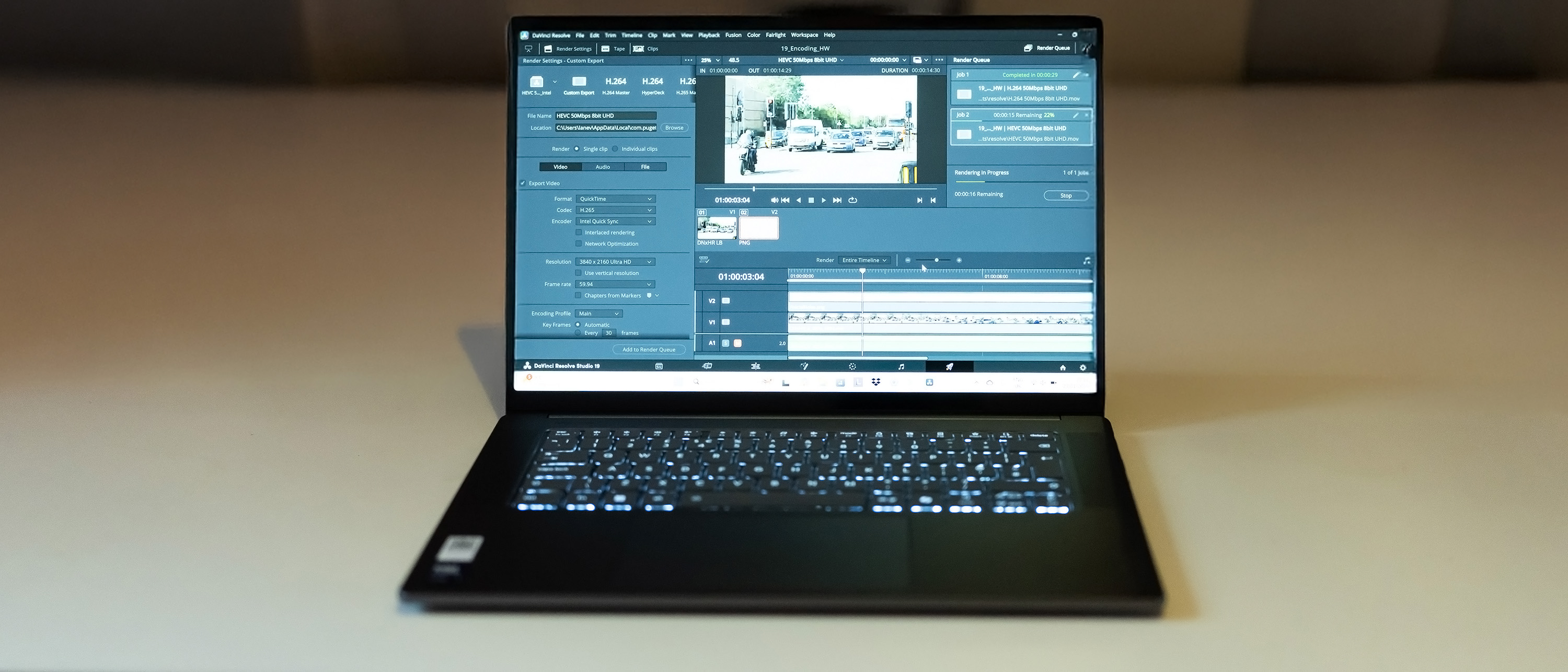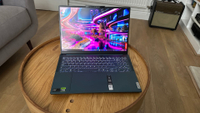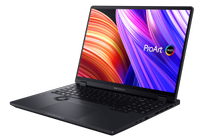Our Verdict
If you’re after a laptop that will work all day and not get particularly warm, then the Lenovo Yoga Slim 7i Aura Edition is worth checking out. With its sleek aluminium shell and bang-up-to-date internals, it’s a solid choice for an office PC, but it can’t push particularly hard in the graphics department.
For
- Looks professional
- Good battery life
- CPU is strong
Against
- GPU could be better
- Feels heavy
Why you can trust Creative Bloq
Lenovo is known for its professional laptops, and the new Slim 7 Aura edition doesn’t fall far from the tree. It uses one of the latest (at the time of writing) Intel processors, backs it with plenty of RAM and fast storage, and houses a battery that can keep it going for a surprisingly long time. It’s a good choice for office work or light design, but won’t handle large amounts of high-res pixel-pushing thanks to its reliance on an integrated GPU.
Key specifications
| CPU: | Intel Core Ultra 7 258V |
| NPU: | Intel AI Boost (47 TOPS) |
| Graphics: | Intel Arc Graphics 140V |
| Memory: | 32 GB LPDDR5X 8533MT/s |
| Storage: | 1TB SSD |
| Screen size: | 15.3in |
| Screen type: | IPS touchscreen |
| Resolution: | 2880 x 1800 |
| Refresh rate: | 120Hz |
| Colour gamut (measured): | 99% DCI-P3 |
| Brightness (measured): | 548 nits |
| Ports: | 2x Thunderbolt 4, 1x USB-A, 1x HDMI 2.1, 3.5mm audio |
| Wireless connectivity: | Wi-Fi 7, Bluetooth 5.4 |
| Dimensions: | 14mm x 344mm x 235.5mm |
| Weight: | 1.46kg |

Design, build and display
• Not a 2-in-1
• Good port selection
Is a laptop that can’t fold itself into interesting positions still a Yoga? Lenovo clearly thinks so, as the brand name is emblazoned on the corner of the machine, but this isn’t a 2-in-1 design like the Lenovo Yoga Slim 7x Gen 9, but instead a standard flat-folding laptop with a metal shell that’s going to draw comparisons with the MacBook Pro, especially considering its gunmetal grey finish. The power switch is at the side of the machine, along with a useful light that tells you whether the machine is charging or is fully charged.
It’s not particularly thick, but the screen feels large for a 15-inch model and it also feels a touch heavy, though that may just be because the ASUS Zenbook A14 is still in the Creative Bloq Testing Lab and Spa, a machine that feels paper-light in comparison. There's a full-size HDMI port, which is nice to see as messing around with USB-C adapters can get tiresome quickly. There are Thunderbolt ports on both sides, which means you have a choice of which side to charge on, and it has a camera shutter switch so you can block the baleful eye from watching you if you don’t need it. A USB-A port rounds out the selection, handy for plugging in keyboard dongles and other accessories that haven’t migrated to Type-C yet.
Design score: 4/5
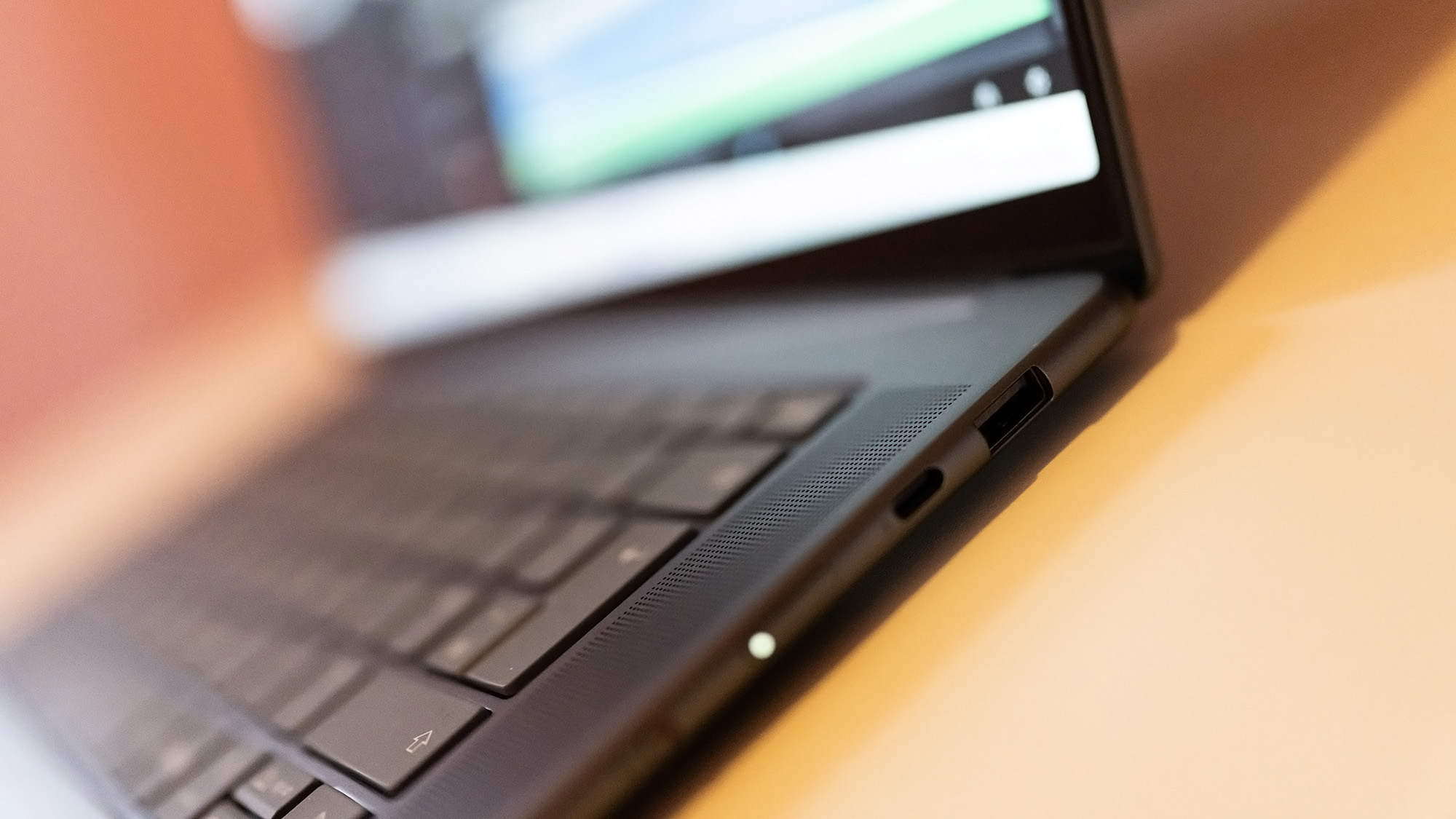
Features
• Screen is bright and colourful
• Keyboard feels a bit slippy
Beyond the port selection, the Yoga Slim 7 Aura Edition is quite a basic offering. There's no OLED, but a perfectly serviceable IPS touchscreen panel with a decent resolution of the type we’re probably supposed to call ‘3K’. More than 1080p but less than 4K, it makes a good choice for a portable machine and won’t tax the GPU unduly. Which is a good thing, as we’ll see.
The webcam is a 1080p model and supports Windows Hello face recognition, while the trackpad is a broad, smooth expanse that’s just different enough from the surrounding casing to make it clear when your finger is in the right place. The keyboard, however, is very smooth indeed, to the extent that your fingers may slide off the keys if you’re in a hurry or have been eating an ill-advised lunch at your desk. The keys themselves are a good size and have a decent amount of travel, a slightly lighter grey than the surrounding metal with a rounded lower edge that gives them a unique look, and with a plain white backlight. The choice to make them quite so texture-free is a curious one, however, and may slow down your typing, at least until you get used to it.
Grilles on either side of the keys house the 2W speakers - there are four in total - and while they’re never going to be the best for streaming with, they’re perfectly acceptable for calls or even a little music when there's no alternative. The sound is metallic in the upper ranges, and there's a bit of rumble in the low end, so you’re going to want a pair of Bluetooth (or wired) cans for the best experience.
Feature score: 3/5
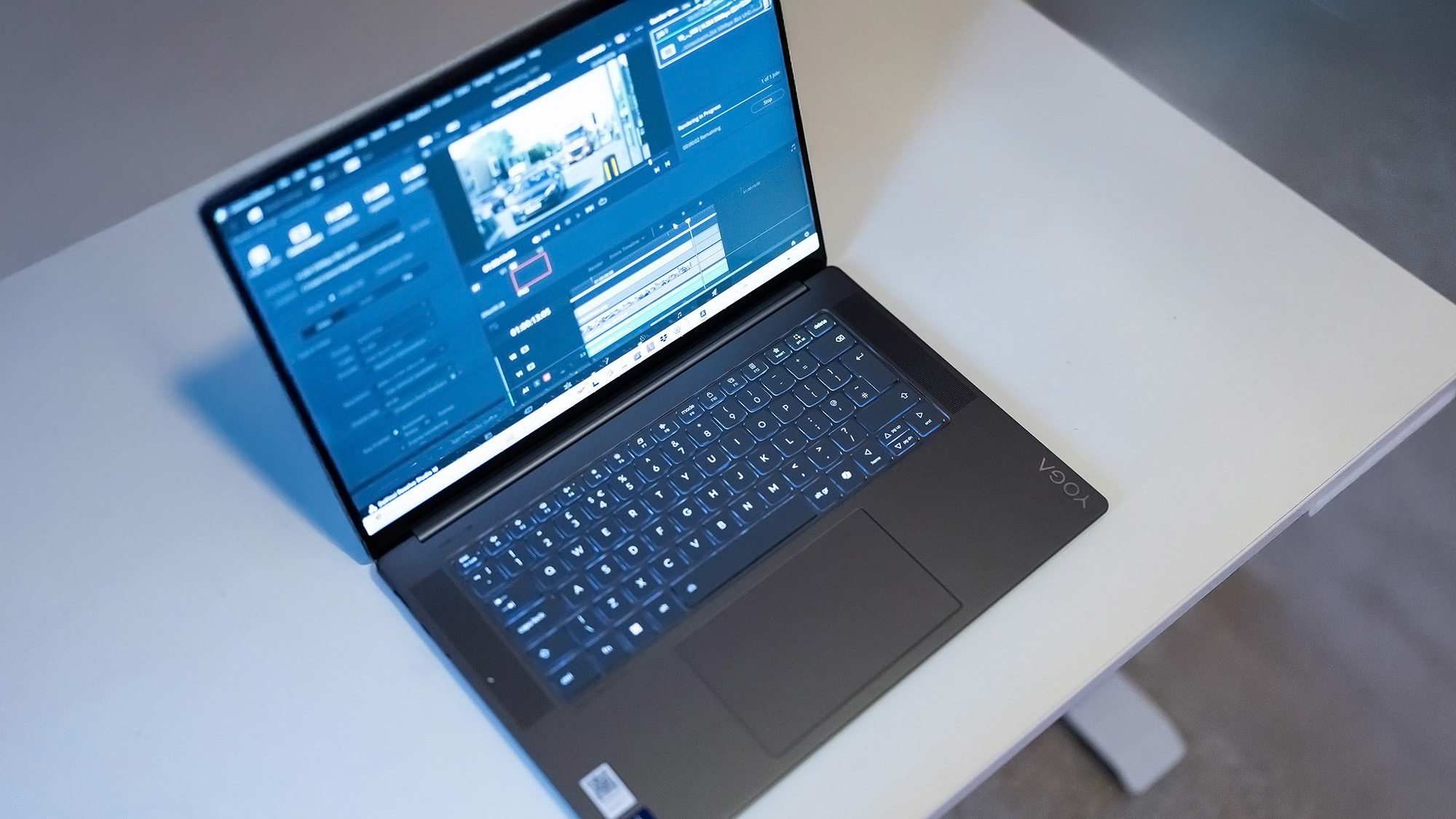
Benchmark scores
We test every one of our laptops using the same benchmarking software suite to give you a thorough overview of its suitability for creatives of all disciplines and levels. This includes:
• Geekbench: Tests the CPU for single-core and multi-core power, and the GPU for the system's potential for gaming, image processing, or video editing.
• Cinebench: Tests the CPU and GPU's ability to run Cinema 4D and Redshift.
• UL Procyon: Uses UL Solutions' Procyon software suite to test the system's ability for AI image generation in Stable Diffusion, its Microsoft Office performance and its battery life.
• Topaz Video AI: We use Topaz Video AI to test the system's ability to upscale video and convert video to slow-motion.
• PugetBench for Creators: We use the PugetBench for Creators benchmarking suite to test the system's ability to run several key tasks in Photoshop and DaVinci Resolve Studio, as well as its performance when encoding/transcoding video.
• ON1 Resize AI: Tests the system's ability to resize 5 photos to 200% in a batch process.
| GEEKBENCH 6 | Row 0 - Cell 1 | Row 0 - Cell 2 |
| CPU Single-core: | CPU Multi-core: | GPU OpenCL: |
| 2748 | 11081 | 26621 |
| CINEBENCH 2024 | Row 3 - Cell 1 | Row 3 - Cell 2 |
| CPU single-core: | CPU multi-core: | GPU: |
| 114 | 517 | n/a |
| UL PROCYON | Row 6 - Cell 1 | Row 6 - Cell 2 |
| AI Image Generation: | Office Productivity Benchmark: | Battery Life Benchmark: |
| 305 | 214,000 (multiplatform test) | 18h 29m |
| TOPAZ VIDEO AI | Row 9 - Cell 1 | Row 9 - Cell 2 |
| Enhancement: | Slowmo: | Combined: |
| 15.54 | 40.93 | 252.25 |
| PUGETBENCH for PHOTOSHOP | Row 12 - Cell 1 | |
| Overall: | Row 13 - Cell 1 | Row 13 - Cell 2 |
| 6568 | Row 14 - Cell 1 | Row 14 - Cell 2 |
| PUGETBENCH for DAVINCI RESOLVE | Row 15 - Cell 1 | Row 15 - Cell 2 |
| General: | GPU Effects: | Row 16 - Cell 2 |
| Tests would not run | Row 17 - Cell 1 | Row 17 - Cell 2 |
| Fusion score: | AI score: | H.264 encoding: |
| Row 19 - Cell 0 | Row 19 - Cell 1 | Row 19 - Cell 2 |
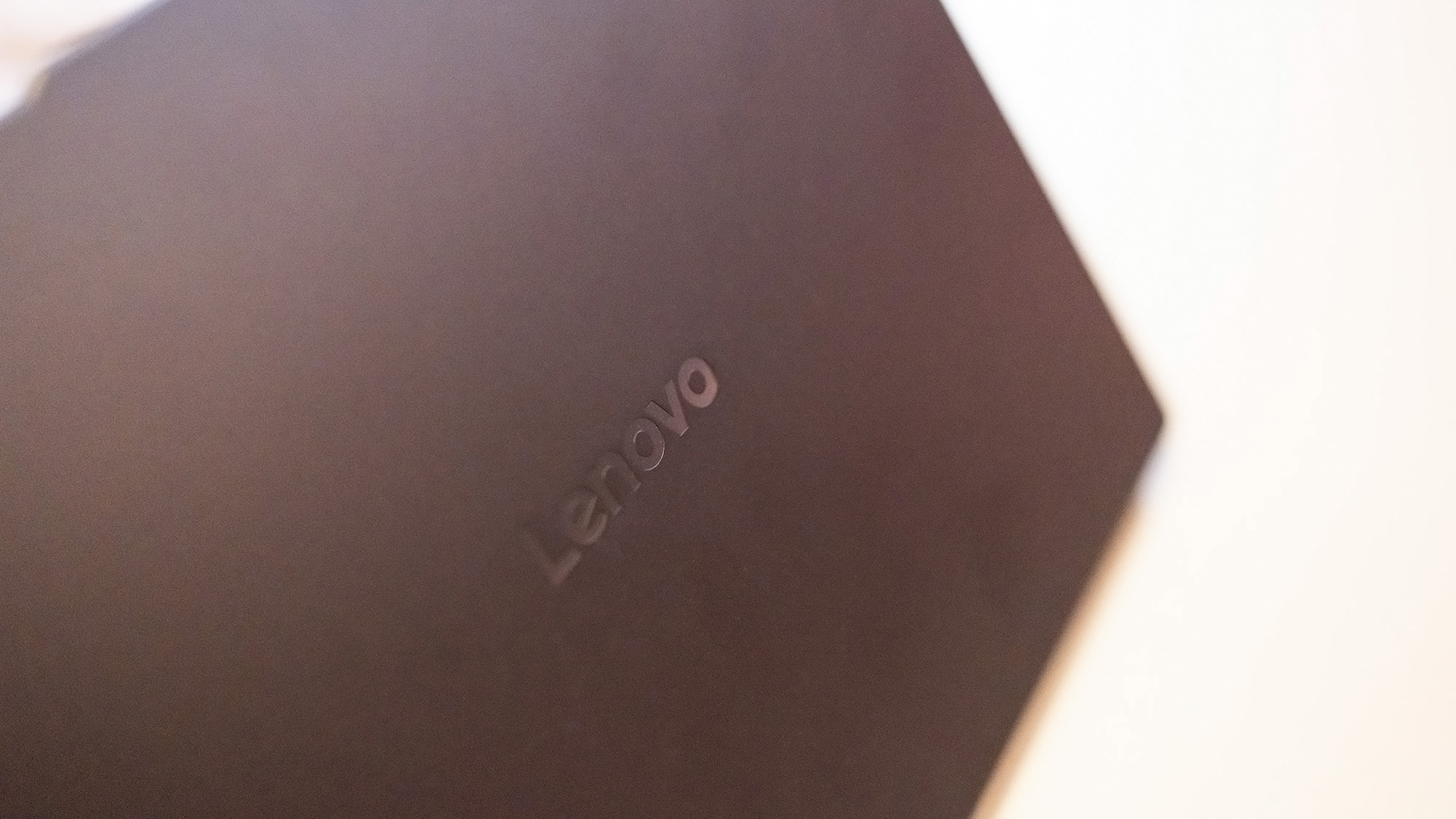
Performance
• CPU very good
• GPU less effective
The second-gen Core Ultra CPU in the Slim 7 Aura Edition is a Lunar Lake model, with eight total cores split between four ‘P’ and four ‘E’. There are CPUs with greater core counts available in laptops, but the Ultra 7 does well in our tests, and the tradeoff between CPU power and battery life is worth it. Even with just the eight cores, it hits M1 Max (10 cores) levels of performance in the Geekbench 6 benchmark, and while that might be a touch off the pace as far as Apple machines and Snapdragons are concerned, the efficient Intel chip proves its worth in a portable when you consider its battery life.
The screen, despite ‘only’ being an IPS, manages a very respectable maximum brightness of almost 550 nits, and can display 99% of the DCI-P3 colour gamut when questioned by our colourimeter. Its Adobe RGB showing is a little lower, at 86%, but a little tweaking may be able to bring this up. The GPU is an integrated model, and it should come as little surprise that it’s the weak link here. It’s just not designed for rendering work, and so scores relatively poorly in tests.
Placed in the cupboard of heck and made to run a video loop until it dropped, without the option to turn the screen off or even dim it from 50% brightness, the Lenovo kept going for a remarkable 18 and a half hours. That’s a two-day battery life if you’re not pushing it too hard, and let it go to sleep occasionally, though any attempts at rendering or AI will probably see it drop.
Performance score: 3/5
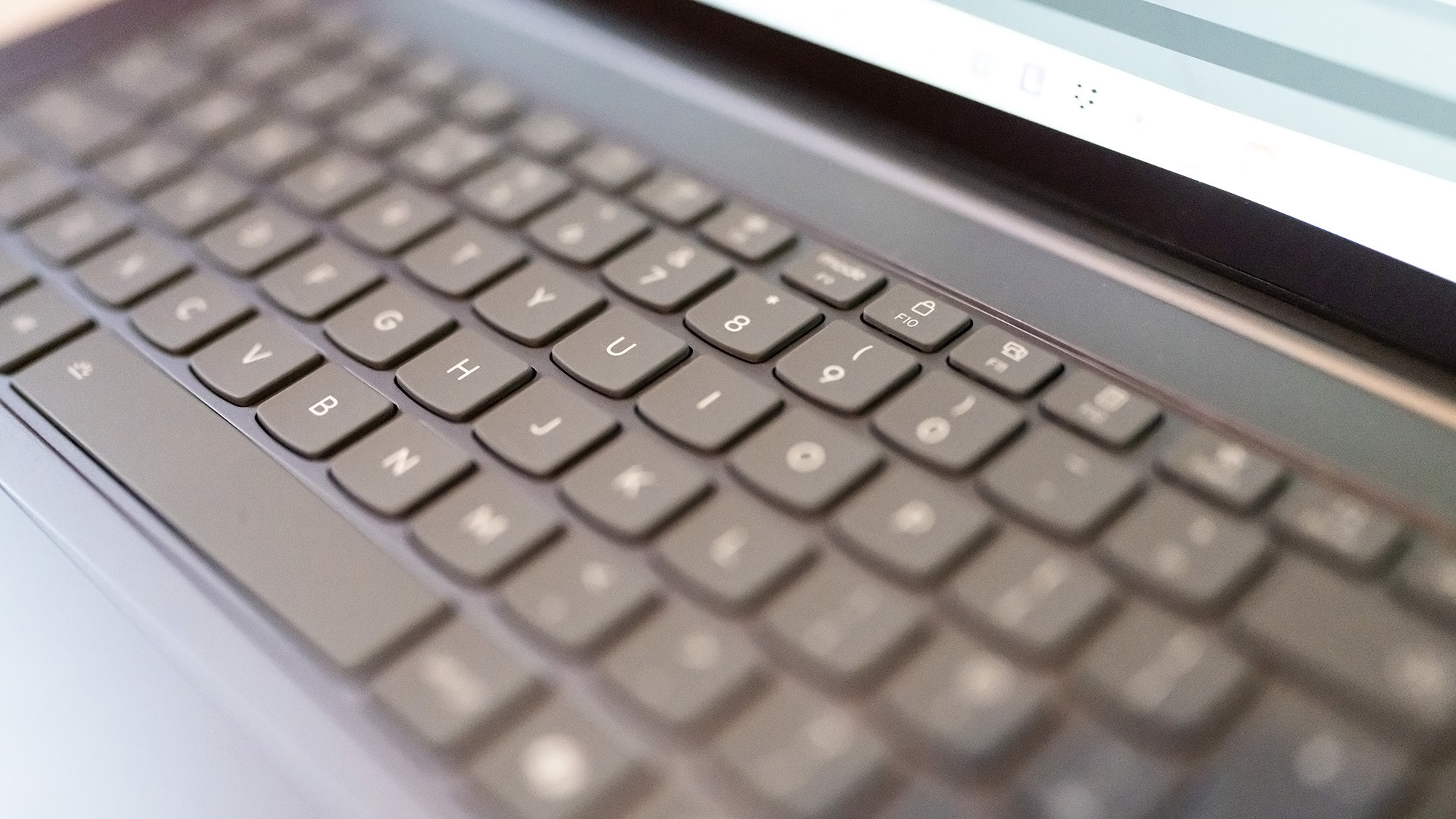
Price
The Lenovo Yoga Slim 7 Aura Edition is currently on sale for $999 and up in the US and from £1,299.99 in the UK. That is the same price as the M3 MacBook Air in its cheapest configuration. This means that if you’re looking for a laptop for light work you’re faced with a tricky choice. The Lenovo machine runs Windows, and so may be the preferred model for particular pieces of software, but the Mac will outdo it in almost all performance metrics. There are also a number of Windows laptops that compete at this price point, and while the Lenovo machine looks smart, that may not be enough to encourage studios to purchase it over more performant PCs.
Value score: 3/5
Who is it for?
This is a good-looking laptop in a tough outer shell and with good endurance, making it an ideal portable machine for tasks that don’t require large amounts of GPU compute. It’s well-connected, and capable of a decent level of performance, making it well-suited to office tasks, 2D design, and photo editing. Ask it to handle anything requiring heavy graphics processing - or AI work that relies on the GPU rather than the NPU - and it can struggle, and there are better-specced machines that are more suited to those tasks.
| Attributes | Notes | Rating |
|---|---|---|
| Design: | Looks professional, if a bit grey | 4/5 |
| Features: | Good selection of ports | 3/5 |
| Performance: | Decent CPU, GPU could do better | 3/5 |
| Value: | Lots to choose from at this price point | 3/5 |
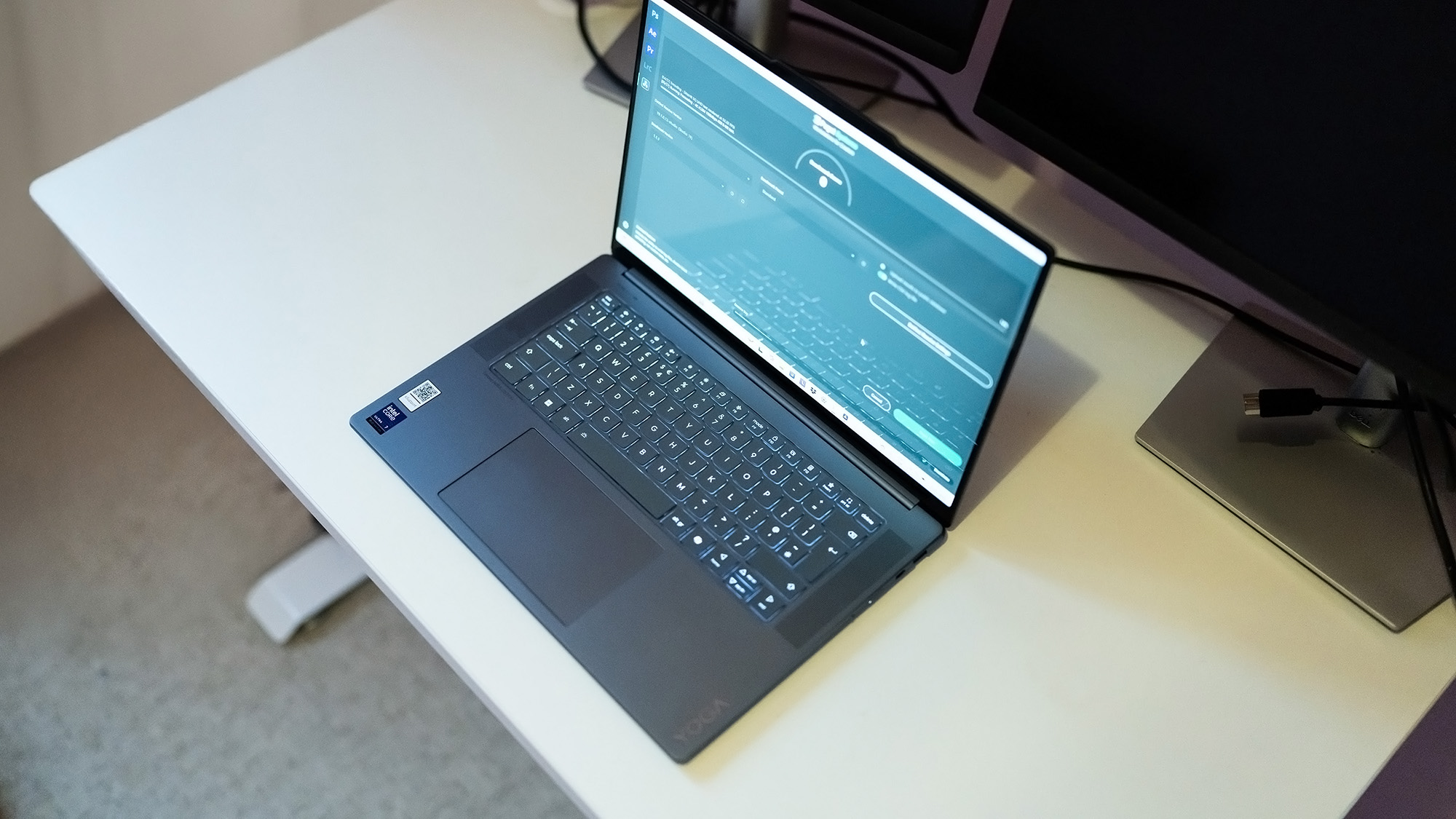
Buy it if...
- You want to look like a professional
- Your apps require decent CPU performance
- You will be away from power sockets for a while
Don't buy it if...
- GPU performance matters
- Something smaller and lighter would be more appropriate
Also consider
Bigger and with an Nvidia GPU for the rendering work, this Yoga costs more, but might suit a studio better.
The laptop to beat at this price point, and a possible M4 update makes it even more enticing.
Excellent specs and Thunderbolt 4 topped by an OLED screen. This is a mobile workstation that won't let you down.
out of 10
If you’re after a laptop that will work all day and not get particularly warm, then the Lenovo Yoga Slim 7i Aura Edition is worth checking out. With its sleek aluminium shell and bang-up-to-date internals, it’s a solid choice for an office PC, but it can’t push particularly hard in the graphics department.

Ian Evenden has been a journalist for over 20 years, starting in the days of QuarkXpress 4 and Photoshop 5. He now mainly works in Creative Cloud and Google Docs, but can always find a use for a powerful laptop or two. When not sweating over page layout or photo editing, you can find him peering at the stars or growing vegetables.
You must confirm your public display name before commenting
Please logout and then login again, you will then be prompted to enter your display name.
